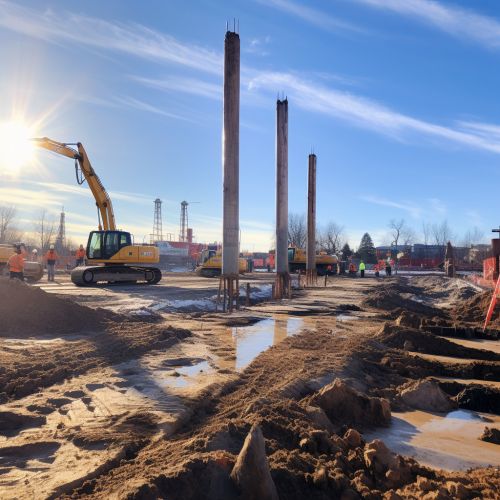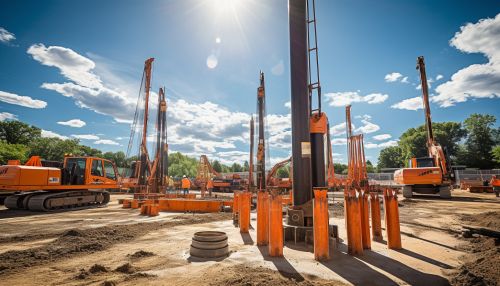Deep Foundation
Introduction
Deep foundation, also known as pile foundation, is a type of foundation that transfers building loads to the earth farther down from the surface than a shallow foundation does, to a subsurface layer or a range of depths. A pile or piling is a vertical structural element of a deep foundation, driven or drilled deep into the ground at the building site.
Types of Deep Foundations
Deep foundations can be made out of timber, steel, or concrete. Two types of pile foundation are end bearing piles, where the pile rests on a layer of especially strong soil or rock, and friction piles, where the pile transfers the load to the soil across the full height of the pile by friction.
Driven Piles
Driven piles are constructed of wood, reinforced concrete, or steel. Wooden piles are made from the trunks of tall trees. Concrete piles are available in square, octagonal, and round cross-sections. They are reinforced with rebar and are often prestressed. Steel piles are either pipe piles or some sort of beam section.
Drilled Piles
Drilled piles, also called caissons, drilled shafts, drilled piers, Cast-in-drilled-hole piles (CIDH piles) or Cast-in-Situ piles, are a type of deep foundation and are constructed by drilling a large hole in the ground and filling it with concrete and reinforcing steel.
Applications of Deep Foundations
Deep foundations are commonly used for structures where the loads from the structure exceed the safe bearing capacity of the surface soils. Deep foundations are also used in situations where the surface soils are highly compressible and would settle under the loads from the structure.
Design Considerations
The design of a deep foundation involves many factors, including the type of foundation, the soil conditions, the loads from the structure, the local building codes, and the cost. The design process typically involves geotechnical engineers and structural engineers.
Construction Methods
The construction of deep foundations involves a number of steps, including site investigation, foundation design, construction of the foundation, and testing of the foundation. The construction process can be complex and requires specialized equipment and experienced personnel.
Advantages and Disadvantages
Deep foundations have a number of advantages over shallow foundations, including the ability to support larger loads, the ability to reach stronger soils or rock at greater depths, and the ability to resist uplift forces from wind or seismic loads. However, deep foundations also have disadvantages, including higher cost, longer construction time, and the need for specialized equipment and experienced personnel.
See Also


